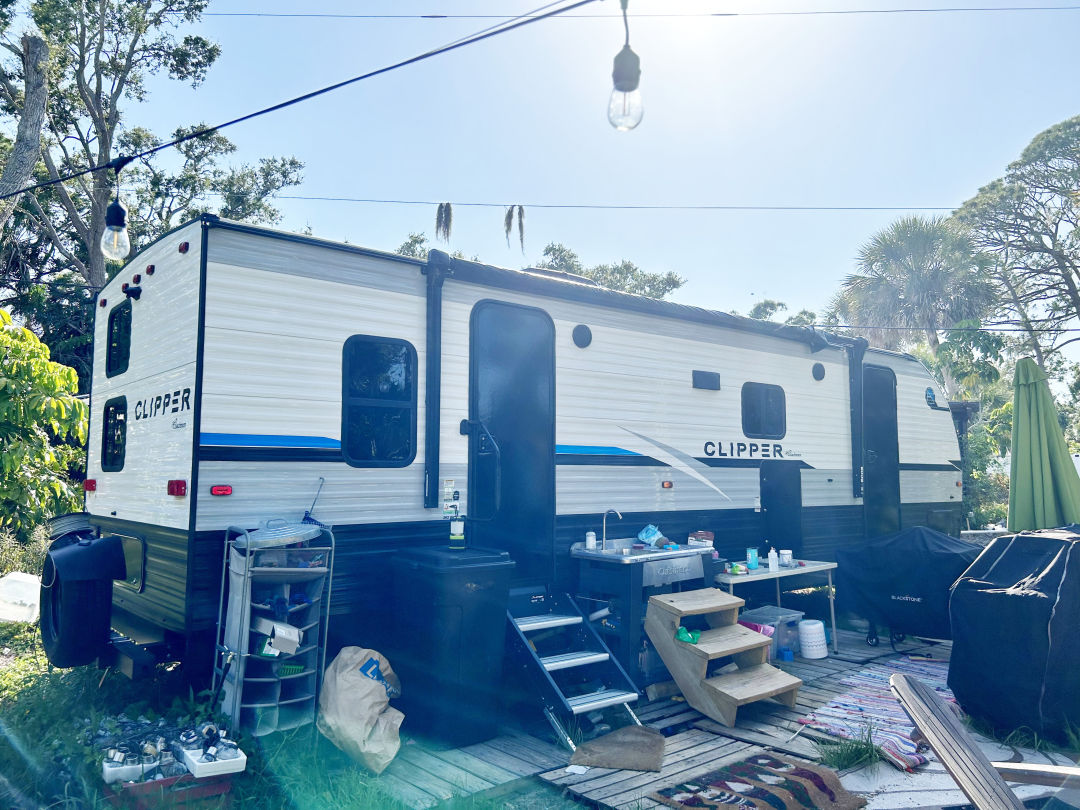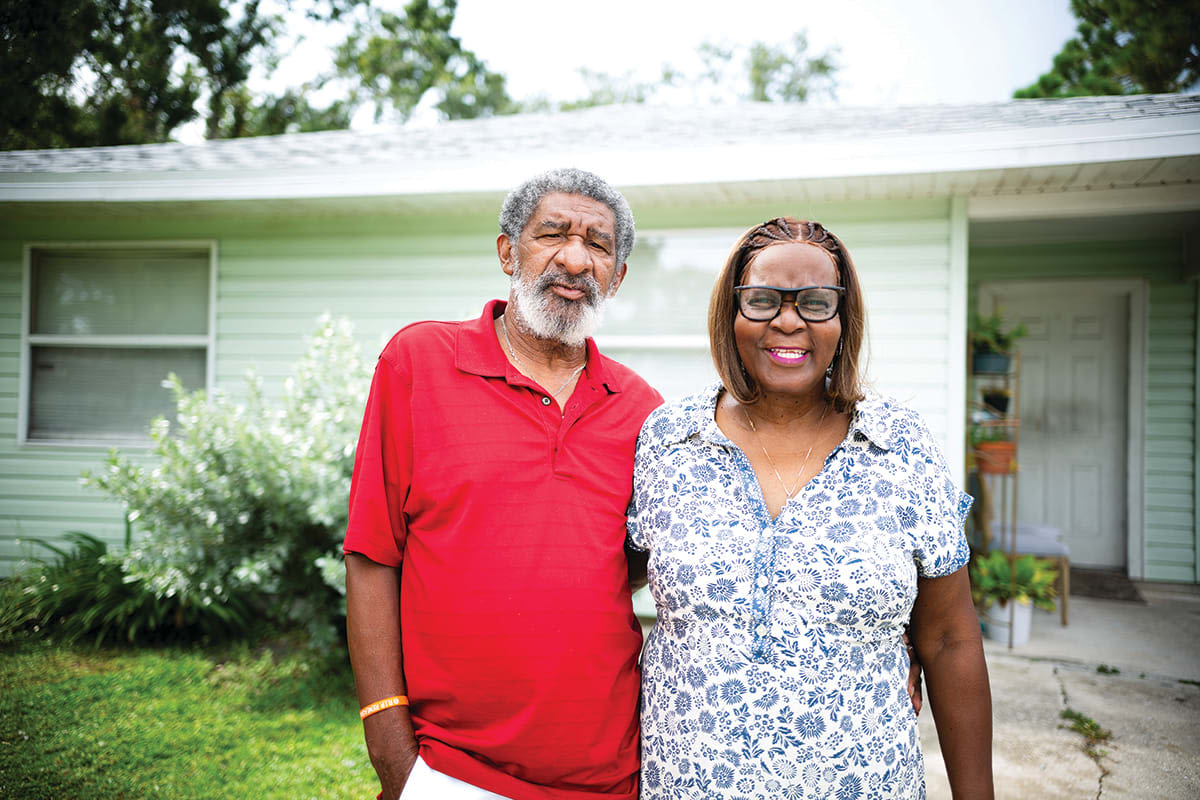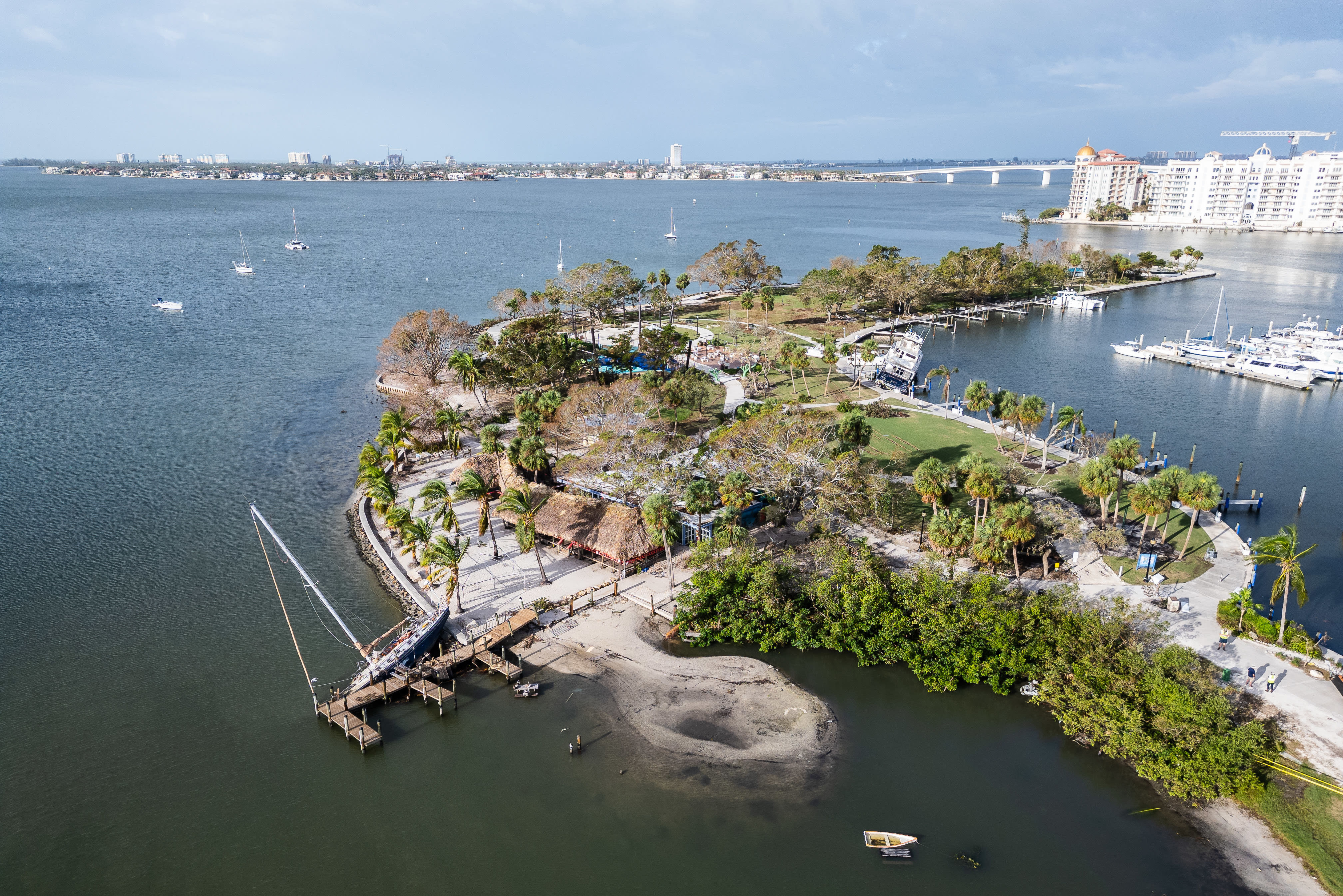For Some, Hurricane Ian Still Isn’t Over

Lindsay Weishaar and her family, including daughters Lily and Piper, have hit roadblock after roadblock, spending months dealing with insurance companies and FEMA for funding or help in repairing their home in Venice.
Image: Community News Collaborative
It’s still the early stages of the 2023 hurricane season, with September’s traditional peak of activity still on the way, but hundreds of Sarasota County residents remain in crisis following Hurricane Ian and the season that ended in November 2022, a South County study has found.
The Sarasota County Long Term Recovery Group, spearheaded by United Way of South Sarasota County, created a needs assessment to identify people and projects that require attention. As of June 27, the group has served more than 287 households, although it originally expected to see as many as 2,000. Participation is still open to those in need.
“In this particular area, they had not experienced any significant hurricane damage for 80 years, so the fact that there was a need for any assistance was very unusual,” says United Way vice-president of philanthropy Judy Jankowski. “I think a lot of folks were not prepared, and a lot of them decided to ride out the storm. Because of that, they didn’t have time to evacuate or adequately prepare in their minds.”
Jankowski says many residents had faith that agencies such as the Federal Emergency Management Agency (FEMA) or private insurance companies would help.
Instead, residents such as 43-year-old Lindsay Weishaar, a nurse at Sarasota Memorial Hospital at the time of the hurricane, and her family have hit roadblock after roadblock, spending months dealing with insurance companies and FEMA for funding or help in repairing their home in Venice.
“I had flood insurance, I had homeowners’ insurance, two separate companies, two policies. We evacuated despite the fact that less than a year prior we installed all new hurricane-impact windows and doors, our roof was only eight or nine years old, and historically we have never flooded,” says Weishaar. “The next morning, we came [home] and there was still water in the house. All the rugs were soaking wet, all my furniture was soaking wet. I thought, 'OK, well this isn’t good, but this is why we have insurance.’”

The Weishaars' dog, Sandy. Repairs on the family's home are expected to be complete in September, about a year after the damage was done.
Image: Community News Collaborative
Weishaar began the claims process on her way back home the morning after Ian delivered torrential rain, flooding storm surge and triple-digit winds, beginning what would be a long road toward getting her home back, though it’s still not finished. From October to January, the Weishaars moved nine times, a difficult task with two children under the age of 6, and exhausted their savings.
“FEMA provided no reimbursements for housing, no help whatsoever, and their statement to me was, ‘Well, ma’am, we’re really here to help the people who are uninsured or underinsured, and you have insurance,’” said Weishaar. “But my insurance, Citizens, would not allow me to use my loss of use funds because we were out of the house due to the flood, and the flood insurance doesn’t even offer loss of use. So if your house is damaged by a flood, you’re just out of luck if you can’t live in it.”
Before the family could receive help from FEMA, they had to provide a denial letter from Citizens, which Weishaar says she did not receive until Dec. 27, 2022. After receiving the letter, Weishaar visited the Disaster Recovery Center in Englewood, where she was approved for about $1,500 a month in rental assistance.
According to apartments.com, the average studio apartment in Venice costs $1,516 a month, while a three-bedroom is nearly $3,000. With Weishaar having to live within 30 minutes of the hospital for work, this made finding housing near impossible.

United Way of South Sarasota County provided the Weishaars with a camper while repairs were being made on their home.
Image: Community News Collaborative
Finally, a friend referred the family to United Way, which provided them with a camper in which to live in their backyard. After months fighting with insurance, getting their home reappraised, waiting on permits, and taking out more than $130,000 in loans to cover the difference between coverage and actual cost, repairs to the Weishaars' house began on June 6, 2023, with completion expected in September—about a year after the damage was done.
At press time, the Weishaars had not participated in the needs assessment, so their expenses are not included in the estimated $4,796,964 cost to cover the needs of the 287 households that applied for the assessment.
Over half of those who took part in the assessment are elderly, with another 58 being disabled and 46 being veterans. According to Chris Johnson, vice-president of community impact at United Way, 80 percent of applicants also suffer from chronic medical conditions.
The assessment breaks down needs based on severity and urgency, fulfilling needs through partnerships with more than 45 local nonprofits and volunteer groups. These groups have been organized into committees and case managers.
“We were able to break it down from the construction and structural needs of recovery to household needs and personal needs,” says Johnson. “Case management is the key to the success of any of these programs, because that case manager is the one who’s helping that family one-on-one, identifying the needs and then connecting resources.”
The needs assessment can connect individuals to resources that provide assistance with structural repairs, clothing, appliances, spiritual needs and mental health needs beyond those which traditional insurance and federal aid can provide.
According to Johnson, this is exactly the group’s mission. He says that there are three stages to disaster response and recovery: short term, intermediate and long term. Short term is where the county and local entities provide immediate help in the days after the event. Intermediate is when organizations such as FEMA do the heavy lifting, lasting weeks to months. The long term response is reserved for groups such as the Long Term Recovery Group, potentially reaching the year or more mark.
“There are still people out there who are in the middle of crisis,” Johnson says. “The hurricane is not over for them yet, even though the vast majority of the county has moved on. It’s still a day-in, day-out thing for them.”
As the group continues to fill these needs, Johnson noted that it will also be preparing and planning so that it can respond much more quickly to any future events.
Need Help?
The Emergency Fund is a "last resort fund" established to assist working people and their families who live in Venice, North Port, Englewood, Osprey, Nokomis or Laurel and who have experienced an unbudgeted and unexpected expense, a lay-off, an unexpected loss of income or a financial hardship
Click here or visit the United Way offices at 4242 South Tamiami Trail, Venice for assistance in signing up for help.
Sarah Owens of the Community News Collaborative can be reached at [email protected]



